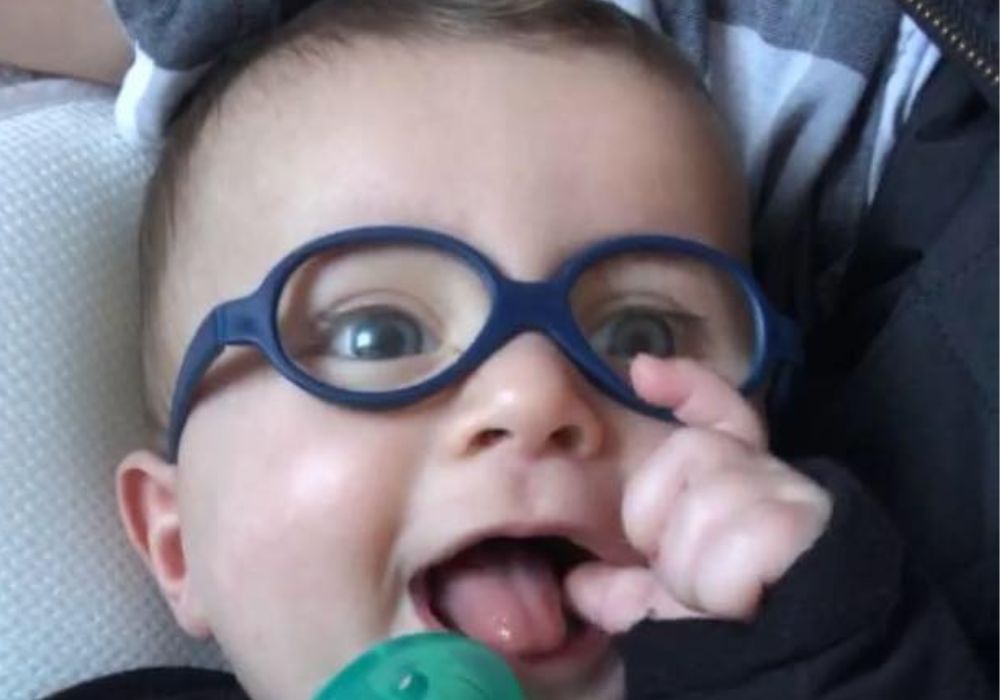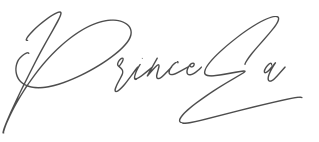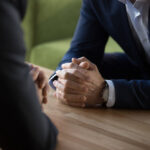A Boy Who Was Born Blind Gets Sight Restored in World-First Gene Therapy Treatment

What if you were born into darkness—not as a metaphor, but as a daily reality? No sunrise. No smile. Just a blur of shadows and light, if that. For children born with Leber congenital amaurosis, a rare genetic eye disorder, this is all they’ve ever known. Caused by a faulty gene, their world is quiet on the visual front. Doctors could diagnose it, but until recently, they couldn’t fix it.
That changed when a team of surgeons at London’s Great Ormond Street Hospital tried something that had never been done before. They injected healthy genes into the eyes of four children—from the U.S., Turkey, and Tunisia—and waited. Slowly, shapes came into focus. Toys. Faces. Even words. One boy who used to show no response to light now reaches for phones in his teachers’ pockets. It wasn’t a miracle. It was science—but it felt like both.
Introducing Jace

Jace’s parents, Brendan and DJ, first sensed something was wrong when he was just a few weeks old. At an age when babies usually begin to recognize faces, Jace didn’t make eye contact. He didn’t follow movement. He didn’t smile back. The moments that typically reassure new parents were missing.
They spent nearly a year searching for answers—doctor visits, tests, second opinions. Finally, they received a diagnosis: Jace had Leber Congenital Amaurosis, one of the most severe forms of inherited childhood blindness. His specific condition stemmed from a rare mutation in the AIPL1 gene, which plays a critical role in helping the light-sensing cells at the back of the eye function and survive.
At the time, there was no established treatment. Children with this mutation lose vision quickly, and most are left with little more than the ability to sense light. Even that fades over time.
Brendan later described the diagnosis as “a shock,” but also, strangely, a relief. After months of uncertainty, they finally had a name for what was happening. But they were still left with a question no parent ever wants to face:
What do you do when there’s nothing you can do?
How Jace Began to See for the First Time

By chance, the Broadbins learned about a clinical trial taking place nearly 3,500 miles away at Moorfields Eye Hospital in London. Researchers there were preparing to test a pioneering treatment: gene therapy targeted at children with the same rare AIPL1 mutation that affected Jace.
It wasn’t a guaranteed solution. It wasn’t even officially approved. But for families facing a condition with no existing options, it was a rare opportunity—offered under a compassionate use license for children with no alternatives.
At just two years old, Jace became one of four toddlers selected from around the world. The procedure was delicate, but focused: surgeons injected healthy copies of the AIPL1 gene directly into the back of one eye, using keyhole surgery. The healthy genes, carried by a harmless virus, aimed to repair the retinal cells responsible for detecting light and sending signals to the brain.
The entire operation took about an hour.
Doctors hoped that by intervening this early—before the retinal cells completely died out—they might slow the damage. Maybe even restore some vision.
No one promised a miracle. But science, at its best, doesn’t rely on promises. It relies on possibility.
And just weeks later, the Broadbins began to see the difference.
The Day His Sight Returned

Just weeks after the procedure, something happened that stopped Brendan in his tracks. Sunlight poured into their home one morning, and Jace turned toward it. Then he pulled back and squinted. It wasn’t subtle. It was instinctive—an immediate, physical reaction to brightness he had never noticed before.
That moment was more than encouraging. It was undeniable. Jace was beginning to see.
Before treatment, he couldn’t track a toy held inches from his face. His world had no visual boundaries. After surgery, he started picking objects up off the floor. He reached for toys, recognized movement, and explored his surroundings in a way he never had. His teachers began sending notes home—how he was swiping phones from pockets, chasing after light, acting on visual cues for the first time.
At home, his parents watched him draw with crayons. Scribbles turned to lines. Lines turned into letters. For a child who had never seen clearly, the idea of writing wasn’t just a milestone—it was a quiet revolution.
Doctors confirmed what they were witnessing. In his treated eye, Jace’s visual function had improved far beyond what’s expected for children with his condition. Meanwhile, his untreated eye continued to decline, reinforcing the impact of the therapy.
For Brendan and DJ, each small sign added up to something life-altering. Sight, once out of reach, was now unfolding—one moment at a time.
The Science Behind the Breakthrough
Jace’s improvement didn’t come from a miracle. It came from years of research, risk, and the quiet persistence of scientists who refused to accept blindness as a final sentence.
At the heart of his condition is a rare mutation in the AIPL1 gene, one of several known to cause Leber Congenital Amaurosis—a severe, inherited form of blindness that begins in infancy. This particular gene is essential for the survival of photoreceptors, the light-sensing cells in the retina. Without it, those cells die quickly, often within the first few years of life.
The treatment Jace received involved injecting healthy copies of the AIPL1 gene directly into the retina. Doctors used a harmless virus as a delivery vehicle—engineered to carry only the functional gene, nothing else. The surgery was done through a small incision, barely visible afterward. The goal was to give the retina what it had been missing since birth: the tools to function, to survive, and in some cases, to rebuild.
What made this trial especially powerful was its timing. Jace and the other children were treated between the ages of one and three—early enough that some retinal structure was still intact. Scientists believed that if they could intervene before too much damage was done, the chance of meaningful improvement would be much higher.
Follow-up tests showed that the treated eyes had better visual acuity, stronger visual signals to the brain, and more preserved retinal structure compared to untreated eyes. These weren’t just numbers on a chart. They matched what families were seeing every day at home—children recognizing shapes, finding toys, walking more confidently, interacting with their world in a new way.
It’s the kind of evidence that doesn’t just validate a treatment. It changes the standard of what might be possible.
From London to Florida: Proof That Gene Therapy Works

Jace’s story is remarkable—but it’s not the only one.
Three other children, from Turkey, Tunisia, and the United States, received the same gene therapy during the early trial. Each child carried the same genetic mutation. Each had been born legally blind. And like Jace, each showed signs of vision returning after treatment.
Some began to follow movement. Others reached for objects. A few even started to draw or recognize faces for the first time. Every improvement, no matter how small, marked a step away from darkness and toward a life that looked—and felt—different.
All four were treated in just one eye. That was intentional. If something went wrong, the other eye would be left untouched. But what happened was far more telling. In every case, the treated eye showed progress. The untreated eye, as expected, continued to deteriorate.
The study, published in The Lancet, confirmed what families had already seen in daily life. The therapy worked—not in theory, but in practice. It improved vision. It preserved retinal structure. It offered a real, measurable path forward where none existed before.
And this wasn’t the first sign of progress in this space. In Florida, another child—Creed Pettit—received a related gene therapy called Luxturna, approved by the FDA for a different gene mutation linked to blindness. Creed went from carrying a flashlight in his lunchbox to reading books in natural light. What once required tools and workarounds now simply required his eyes.
These are not isolated miracles. They are early chapters in a new story—one where children born without sight may have something earlier generations never did: a chance to see.
The Power of Persistence

Behind every leap forward, there’s a long stretch of patience. These results didn’t come from overnight inspiration. They came from decades of groundwork—of researchers studying rare genes, families volunteering for trials, doctors refining surgical tools down to the millimeter. It’s easy to focus on the final moment, the newsworthy headline, the “first-ever.” But what made that moment possible was the quiet, often unseen persistence of people who kept going, even when there was no applause.
The lead scientists didn’t promise a cure. They promised effort. And that distinction matters. Because real progress isn’t fueled by guarantees—it’s fueled by people willing to show up every day, even when the outcome is uncertain. The families who enrolled their children in this trial knew the risks. There were no guarantees their children would see better. But they took the step anyway. And sometimes, that step into the unknown is what creates the future.
This story reminds us that breakthroughs are rarely clean or glamorous. They’re messy. Emotional. Full of doubt. But they’re also built on trust—between scientists and patients, between parents and physicians, between humans and hope. When we talk about what’s possible in medicine or technology, we can’t forget the human engine behind it all. People willing to keep going, even when the results are years—or decades—away.
What It Means to See—for the First Time

Jace’s path to sight didn’t begin with a dramatic reveal. It started with something simple—his body responding to light for the first time. A small squint toward a sunlit window became the sign his parents had been hoping for. From there, his world began to expand. He reached for toys. He started drawing. What had once been a life defined by touch and sound was now shaped, in part, by vision.
Behind this change was more than a medical procedure. It was a precise, carefully timed act of science—replacing a faulty gene with a working one, early enough to preserve what little function remained in his eyes. But more than that, it was a decision born from his parents’ belief that something better was possible. They crossed oceans without a guarantee. What they found was not a cure, but a chance. And Jace made the most of it.
This isn’t just a story about one boy. It’s a reminder of how far science has come—and what it can mean when paired with relentless love. For families still searching for answers, Jace’s story offers something real: not empty hope, but evidence. And for the rest of us, it’s a reason to pause. Because to witness a child seeing for the first time isn’t just powerful—it’s a call to notice what we’ve always had, and never had to earn.
Featured Image Source: DJ Senft Broadbin on Facebook
Source:
- Michaelides, M., Laich, Y., Wong, S. C., Oluonye, N., Zaman, S., Kumaran, N., Kalitzeos, A., Petrushkin, H., Georgiou, M., Tailor, V., Pabst, M., Staeubli, K., Maimon-Mor, R. O., Jones, P. R., Scholte, S. H., Georgiadis, A., Van Der Spuy, J., Naylor, S., Forbes, A., . . . Bainbridge, J. W. B. (2025b). Gene therapy in children with AIPL1-associated severe retinal dystrophy: an open-label, first-in-human interventional study. The Lancet, 405(10479), 648–657. https://doi.org/10.1016/s0140-6736(24)02812-5
Loading...






